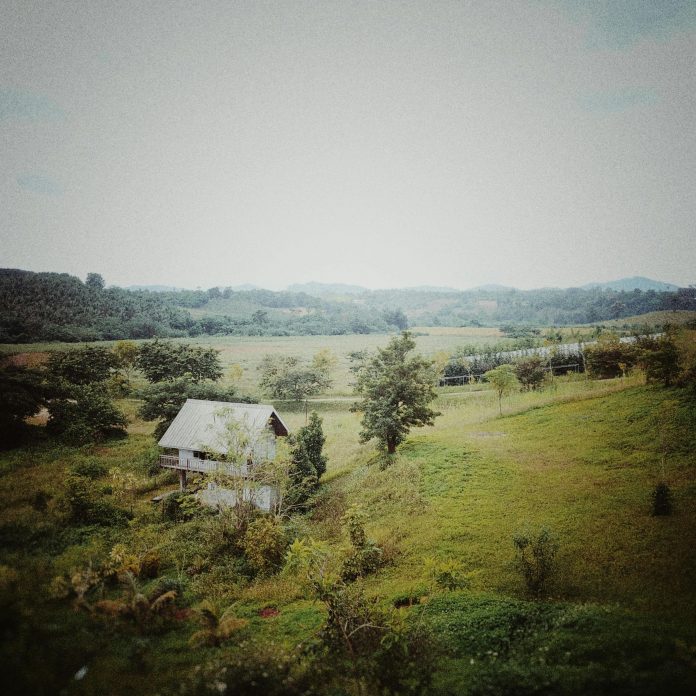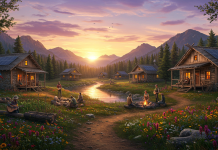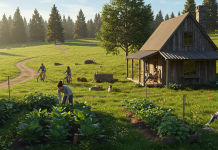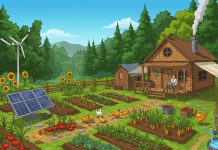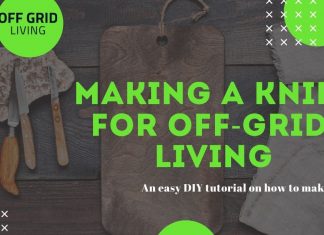While constructing a cabin isn’t a walk in the park, the process becomes financially manageable when you take matters into your own hands. By rolling up your sleeves and opting for a do-it-yourself approach, you will discover the possibility of saving every penny possible without compromising on the dream of a rustic retreat. In this comprehensive guide, we explore how you can build your off grid cabin on a budget. Let’s go!
Building an Off Grid Cabin on Budget
The foundation you choose for your cabin sets the financial tone for the entire project. Whether you opt for a permanent foundation or decide to rest your cabin on concrete blocks or stone pillars significantly influences your overall budget.
When it comes to costs, the difference between building on a concrete foundation versus placing it on blocks or pillars is substantial. This decision, marks a pivotal point in your budget considerations and shapes the financial direction of your cabin construction. Need help with concrete works? Contact services at goldcoastconcreter.com.au for professional services.
However, it is important to note that besides the foundation, there are three major considerations: septic, water, and power. Addressing these aspects becomes paramount in ensuring a functional and comfortable off-grid living experience.
So, how do you start?
Find the Right Land
Your off-grid cabin journey starts with the crucial task of selecting the perfect piece of land. The “where” carries significant weight as it influences the type of cabin you can build. It also dictates your expenses on building supplies, off-grid utilities, daily living costs, and property taxes.
When scouting for land, prioritize areas abundant in rocks and trees. These natural features not only enhance the aesthetic appeal of your off-grid cabin but also contribute to the cost-effectiveness of your construction. Looking for tree services Greensboro? Contact RMZ Tree Service. Make sure that you have a tree trimming company to assist you in maintaining healthy-growing trees. The presence of these elements can reduce the need for extensive landscaping and site preparation. This translates to savings in both time and money.
Additionally, access to water is a non-negotiable factor in your decision-making process. Go for a plot that either has water readily available or provides viable options for obtaining it. This consideration is fundamental not just for daily living but also for potential cost savings in establishing water-related off-grid utilities.
Equally vital is a thorough understanding of building regulations and zoning restrictions applicable to your chosen area. This knowledge ensures compliance with local rules and safeguards your investment against any unforeseen legal complications. Being well-informed from the start paves the way for a smooth and budget-conscious land acquisition process.
Wondering how long it really takes to get a container pool up and running? The shipping container pools installation process is remarkably efficient. Our guide outlines the key stages, including delivery methods, foundation requirements, and utility connections. Discover how quickly you can enjoy your modern, durable pool with professional planning and execution detailed in our article.
Get the Essential Tools for the Job
The next step is getting the right tools for the job. Having the appropriate tools and equipment isn’t just a matter of convenience as it promises efficiency, time savings, and financial benefits over the long haul. Adopting this mindset becomes pivotal when looking to build a cabin, especially with a keen eye on both budget and self-reliance.
The strategy involves a deliberate choice to invest in tools and equipment essential for crafting materials directly from the natural resources found on the land. This steers you away from the conventional route of purchasing materials from retail stores. Consequently, it not only slashes costs significantly but also lays the groundwork for spending way less for value. This is because the tools and equipment procured for cabin construction continue to be valuable assets for as long as one owns the land. Save the contact of a construction accident lawyer new york city in case of an accident.
One of the key tools you should look for, especially for those aiming to build a cabin without resorting to buying pre-cut lumber, is the portable sawmill. This tool is known for its utility and being the cornerstone of self-sufficiency in building projects. The portable sawmill empowers the transformation of raw logs into the fundamental building materials for the cabin, embodying a strategic investment that not only supports the current project but promises enduring benefits for future endeavors.
Get Down to Business
After identifying the right land and getting the equipment for your project, follow these steps to build your off grid cabin.
- Select the logs: Begin by carefully choosing logs that are a minimum of 10 inches in diameter and match the length of your cabin with an additional 4 feet. Ensure the selected logs are straight, as this will contribute to the structural integrity and overall aesthetic of your cabin.
- Lay the foundations: Once you have your logs in order, it is time to lay the foundations. Whether you are go for a permanent foundation or placing your cabin on concrete blocks or stone pillars, meticulous attention to this stage is crucial. If you need concrete cutting services, you can visit www.concretecuttingadelaide.com.au.
- Raise the log walls: With a sturdy foundation in place, it is time to bring your cabin to life by raising the log walls. Carefully position each log, ensuring a secure and tight fit. Ensure the interlocking of the logs as it contributes to the charming rustic appearance of your off-grid cabin. As you progress, pay attention to the details, ensuring that the logs are well-aligned and the corners are properly fitted.
- Install roofing and flooring: After raising the log walls, the next crucial steps involve installing the roofing and flooring Lynchburg. For the roof, choose a durable and weather-resistant material and equipment that suits your budget and climate. When it comes to flooring, select materials that align with your off-grid lifestyle. Consider factors like insulation, durability, and ease of maintenance. Hiring professional fibre screed services is essential if you have underfloor heating systems.
- Install off-grid utilities: Make your cabin fully functional by installing off-grid utilities. Address essentials like septic, water, and power. You should also set up a compliant septic system, a reliable water source, and integrate renewable energy sources such as solar panels. It is also important to ensure all installations adhere to safety standards and local regulations. This provides a self-sufficient and comfortable living space.
Conclusion
In crafting your off-grid cabin on a budget, meticulous planning, strategic tool investments, and hands-on construction are crucial steps. From selecting logs to raising walls and installing utilities, each step is a testament to self-sufficiency. With resourceful choices and resilient efforts, your off-grid cabin not only becomes a retreat but a testament to the rewarding endeavor of building a sustainable, budget-friendly dwelling from the ground up.


